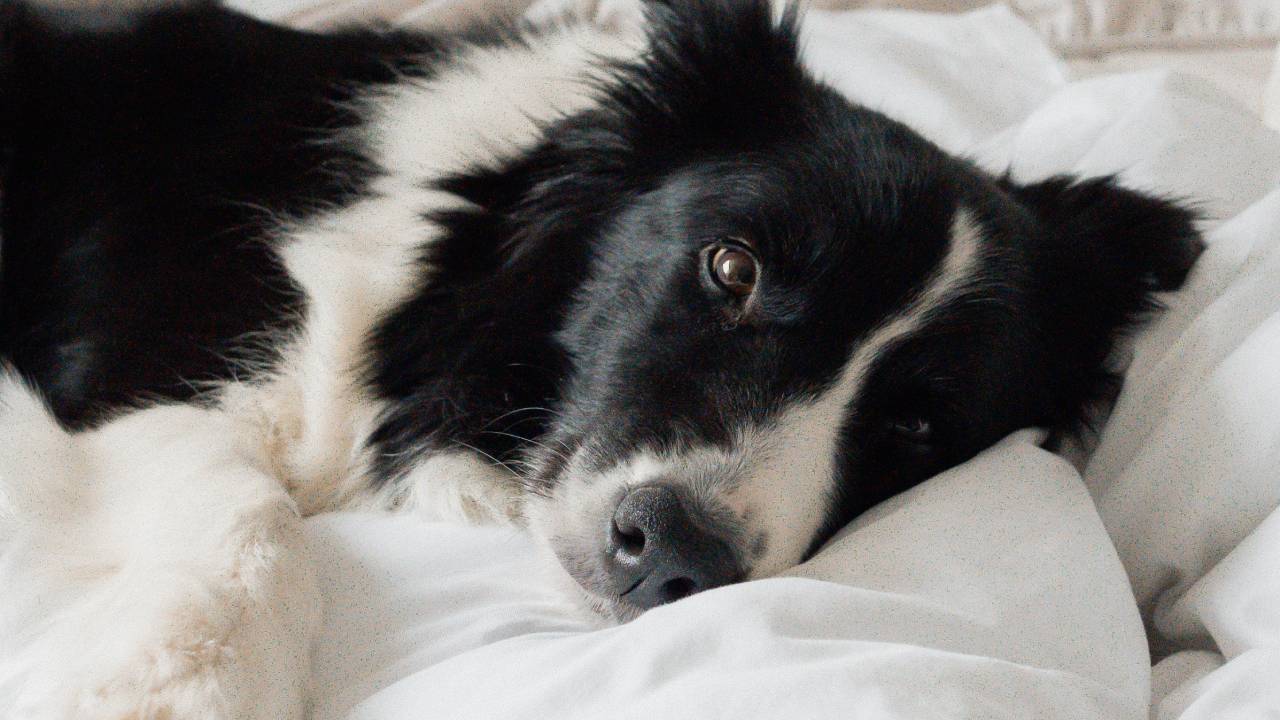Never share a bed with your pet during Autumn, says doctor
Experts and doctors reveal why you shouldn’t share a bed with your pet


If you have a pet, chances are you let them sleep in your bed with you. Whenever I visited my parents' home, I used to love having my dog share my bed with me… even though for a small dog, he took up a huge amount of space!
But during the Autumn months, pet owners may start to notice their pets have started to shed their hair more than normal, which can come to rest on your best mattress or get wrapped up in your best duvet. Whilst sharing a bed with your pet is fun and cosy, I spoke to Happy Beds who collaborated with doctors to find the hidden dangers of allowing your pets to share your bed in Autumn.
Why you shouldn’t share a bed with your pet in Autumn
According to a study published by the National Library of Medicine, 58% of pets sleep on their owners beds and 30% of pets sleep under the duvet. With this in mind, the study looked at a group of healthy dogs and cats and monitored them for zoonotic diseases and parasites. After taking fur samples and collecting the results from the pet owners’ questionnaires, the results found that 1 in 4 (23%) dogs were found to have fleas.
The results went on to find that 86% of dogs and 32% of cats tested positive for Enterobacteriaceae. A group of bacteria that includes salmonella, E.coli and shigella, this bacteria is a common cause of gastrointestinal problems in humans. So, while it’s lovely to curl up with a furry friend, it turns out pets sleeping on your bed can pose serious health risks.
Other than the presence of dirt and bacteria in our beds, pets are more likely to shed hair when there’s a change of season. This shedding of animal dander, which is a material shed from humans and animals, can cause serious health problems when inhaled, like asthma, hives and dermatitis. So, even if you’re not allergic to pet hair, the shedding of hair and skin cells from your animal can worsen your breathing and make your skin itchy and inflamed.
Dr Deborah Lee confirmed this by stating “when you breathe the animal dander particles into your lungs, your body’s immune cells recognise the dog or cat antigen as a foreign substance posing a threat to your health. As a result, an inflammatory reaction is initiated, and cells release histamine, which causes smooth muscle contraction and the airways to constrict, meaning you cannot get much air into the lungs.”

5 ways to remove pet hair from your bed
Other than making your bed a ‘pet-free zone’, you’re not going to be able to get rid of pet hair from your covers. If you can’t resist those puppy eyes, you can still keep your pet on your bed while you sleep, but to make sure you don’t experience any health problems from there, it’s important to remove pet hair from your bed. Use the five tips below or take a look at our guides on how to clean a duvet and how to clean a mattress.
Get all the latest news, reviews, deals and buying guides on gorgeous tech, home and active products from the T3 experts
1. Buy pet hair attachments for your vacuum cleaner
Hoovering your mattress removes dust, dirt and debris, and leaves your bed feeling fresher and cleaner. To tackle pet hair, you can invest in pet hair attachments for your vacuum cleaner. These tools are designed to remove stubborn pet hairs from your home, and the majority of the best Shark vacuum cleaners come with pet attachments as standard.
2. Invest in an air purifier
To better your breathing and combat allergens while you sleep, invest in the best air purifier. An air purifier will remove this pet dander from the air, which is beneficial for those with asthma and allergies, and it improves the air quality in your bedroom and home in general.
3. Try the dryer sheet trick
If you have pet hair on your bedding, take a dryer sheet and rub it back and forth on your pillows and bedding. This motion generates static electricity which attracts and lifts pet hair, while the dryer sheet leaves a nicer smell behind.
4. Groom your pet
Tackle your pet’s shedding problem head on by going to the source: your pet! Regularly brushing your pet can help reduce shedding and it leaves your pet’s coat looking and feeling healthy. If your pet sheds excessively, you should take them to a professional groomer or use de-shedding shampoo when you bathe them.
5. Use lint rollers and fabric softeners for a quick fix
If you don’t have time for a full clean, give your bed a quick once over with a lint roller and fabric softener. Use a lint roller to remove fur from your bed and furniture, before spraying fabric softener around to loosen any tough hair and add a pleasant scent to your home.

Beth is Home Editor for T3, looking after style, living and wellness. From the comfiest mattresses to strange things you can cook in an air fryer, Beth covers sleep, smart home, coffee machines, watches, grooming tools, fragrances, gardening and more.
In her spare time, Beth enjoys running, reading, baking and attempting craft projects that will probably end in disaster!